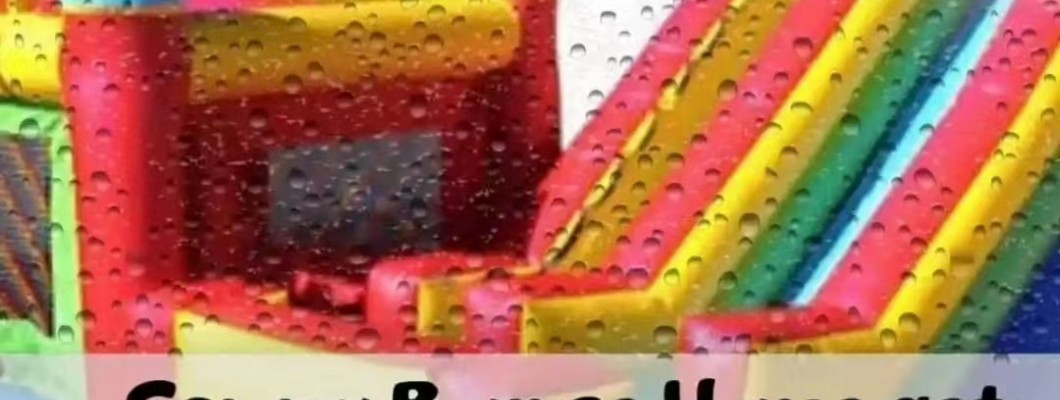
Bounce houses are a fun and exciting addition to any outdoor event, but what happens when the weather takes a turn for the worse? If rain or wet conditions occur, is it still safe to use a bounce house? Here’s what you need to know about bounce house safety in the rain:
1. Is It Safe to Use a Bounce House in the Rain?
In general, using a bounce house in wet or rainy conditions is not recommended:
- Wet surfaces can become slippery, increasing the risk of falls and injuries for children inside the bounce house.
- Rain can affect the stability of the bounce house, particularly if water accumulates on the surface or underneath the structure.
- Electrical components, such as the blower motor, are not designed to be exposed to water and can pose a significant safety risk if they get wet.
2. What to Do If It Starts Raining
If it begins to rain while the bounce house is in use:
- Immediately have the children exit the bounce house in a safe and orderly manner.
- Turn off the blower and unplug it to avoid any electrical hazards.
- Deflate the bounce house and cover it with a waterproof tarp to protect it from further water damage.
3. Can You Use a Bounce House After the Rain Stops?
After the rain has passed, there are several steps you should take before using the bounce house again:
- Check the surface of the bounce house for water. Dry it thoroughly with towels or allow it to air-dry before re-inflating.
- Ensure the ground where the bounce house is placed is no longer slippery or waterlogged.
- Inspect the blower and power cords to make sure they are dry and free from moisture.
- Once everything is dry and safe, you can re-inflate the bounce house and let the kids back inside.
4. Consider Using a Wet/Dry Bounce House
For those looking to use a bounce house in a wet environment, consider renting or purchasing a wet/dry combo bounce house:
- Wet/dry bounce houses are designed to handle both dry and wet conditions, with built-in water slides or splash zones.
- These units often come with water-resistant materials, but you should still follow safety precautions when using them in rainy conditions.
5. Important Safety Tips
If you are determined to keep a bounce house functional in unpredictable weather, keep these safety tips in mind:
- Always have a backup plan in case of bad weather, such as moving the bounce house to an indoor venue or under a large tent.
- Never allow children to play in a bounce house when it is actively raining, and always supervise them to ensure safe play.
- Store the bounce house in a dry location when it’s not in use to prevent mold and mildew from forming.
6. Conclusion
Using a bounce house in rainy or wet conditions is not ideal and can pose safety risks. If rain starts, it’s best to shut down the bounce house and wait for everything to dry before allowing children to play again. Always prioritize safety, and if wet conditions are unavoidable, consider a wet/dry bounce house option to enhance the experience while staying safe.

Leave a Comment